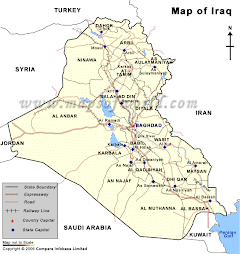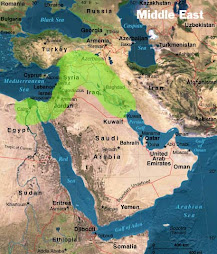According to the electoral law amended in 2009, the seats of the Iraqi parliament have been increased from 275 to 325 seats (In December 2009, after much dispute in parliament, the number of seats was increased to 325 for
Elections in Iraq was different from the 2005 elections as 2005 election was based on a closed list system which meant the voter knew the parties included in the list but not the individual candidates. Such a system paved the way for widespread accusations of corruption and fraud with allegations that some parties relied on family ties and allies to allot seats. In the 2010 election the open list system means voters know the names and identities of candidates in the list they are voting for. The open list system allows the voter to express their preference for a candidate within that list. The number of such individual votes will determine which candidates will win a seat. "Open list" system allows for direct representation and greater transparency. The open-list electoral system was first applied during provincial elections in January 2009.
To win a seat in parliament the candidate or list should win the number of valid votes at least equal to the electoral divider. For example, in a governorate of 10 seats and 10,000 valid votes, a candidate or a list must earn 1,000 votes to get a seat. A party would need 163 seats to form a government, but the proportional representation system makes it unlikely that any single party would achieve that figure and a period of coalition building is expected.
Out of the total 325 seats, 310 are distributed over
Number of candidates
According to the Iraqi High Electoral Commission (IHEC), 6529 candidates representing 86 political entities put in their bids before nomination closed on
Iraqi National
The coalition is the successor to the United Iraqi Alliance (U.I.A.), the Shiite coalition that dominated the 2005 election but fell apart soon after. It is now the main Shiite opposition to Prime Minister Nuri Kamal al-Maliki, and includes the powerful Islamic Supreme Council of Iraq (I.S.C.I.) and the political followers of the anti-American cleric Moktada al-Sadr, as well as smaller parties. Leading candidates will be a former prime minister, Ibrahim al-Jaafari, and one of
KEY LEADERS
Ammar al-Hakim
SHIITEBecame leader of the I.S.C.I. (formerly Sciri), one of the two main Shiite parties, when his father died.
Ibrahim al-Jaafari
SHIITEFormer prime minister. Left Dawa, one of the two most powerful Shiite parties, to form a new party in 2008.
Moktada al-Sadr
SHIITELeads an anti-American group with a strong militia. Loose link to the U.I.A.
State of
Mr. al-Maliki was one of the leaders of the United Iraqi Alliance, which held 47 percent of the seats in Parliament in 2005.
KEY LEADERS
Nuri Kamal al-Maliki
SHIITECurrent prime minister. Left the U.I.A. to recast himself as secular.
Hajim al-Hassani
SUNNIFormer speaker of the National Assembly.
Sheik Ali Hatem al-Suleiman
SUNNIA powerful tribal leader in
Some of the leaders from this group were part of the Iraqi Consensus Front, which held 16 percent of the seats in Parliament in 2005.
KEY LEADERS
SHIITEInterior minister. Part of a coalition that won no seats in 2005.
SUNNIA leader of the Awakening movement in
SUNNILeads a party with Shiite and Sunni religious groups.
Members of this group came from two coalitions, the Iraqi List and the Iraqi Consensus Front, which together held a quarter of the seats in Parliament in 2005.
KEY LEADERS
Ayad Allawi
SHIITEFormer prime minister with strong links to Western and Arab countries.
Saleh al-Mutlaq
SUNNIFormer candidate, now barred from the election.
Tariq al-Hashimi
SUNNIA current vice president. He ran with the Sunni coalition in 2005.
This coalition is a remnant of the Iraqi Accord Front, which held 16 percent of the seats in Parliament in 2005, after many of its members joined other coalitions.
KEY LEADERS
SUNNICurrent secretary general and co-leader of the Iraqi Islamic Party.
Ayad al-Samarrai
SUNNICurrent speaker of Parliament.
The two dominant Kurdish parties, the Kurdistan Democratic Party (K.D.P.) and the Patriotic Union of Kurdistan (P.U.K.), have formed a formidable alliance, but face an opposition movement called Gorran, or Change. Expected to form a unified Kurdish bloc in Parliament — in keeping with the old Kurdish saying, "We have no friends but the mountains" — and could be a swing vote in determining the next prime minister.
This group has most of the same players as the Kurdistan Alliance, which held 19 percent of the seats in Parliament in 2005.
KEY LEADERS
KURDPresident of the
Jalal Talabani
KURDIraq’s president and co-leader of the P.U.K.
KEY LEADERS
KURDCo-founded the P.U.K., but left in 2009 to create a Gorran.





No comments:
Post a Comment